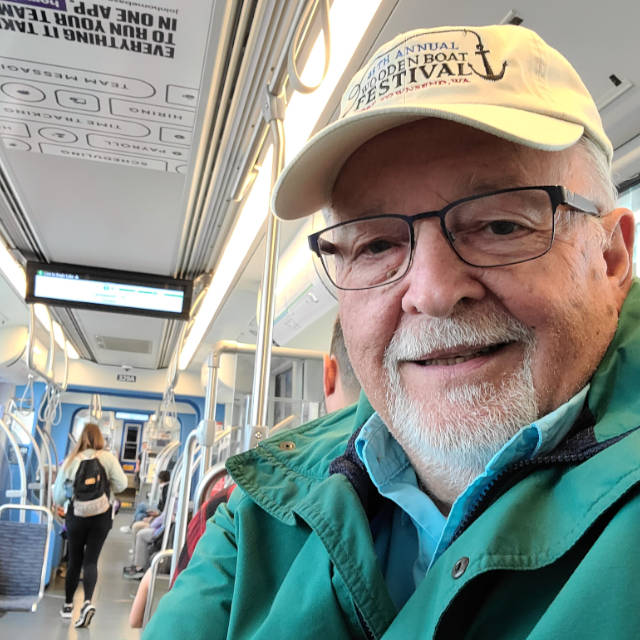Seattle's Sound Transit: Ridership, Energy, and Fiscal Challenges
By EVWorld.com Si Editorial Team

Recently opened Sound Transit station in Lynnwood, Washington. EVWorld''s editor just used it to travel to SEATAC airport while vacationing in the Pacific North West. Fast and stress-free compared to travel by car.
By EVWorld.com Si Editorial Team
Introduction
Sound Transit, the regional transit authority serving the Puget Sound area, has transformed commuting and regional travel with its Link light rail system. Since the first line opened in 2009, the system has grown into a backbone of sustainable mobility, carrying millions of passengers each year and operating on 100% carbon-free electricity.
Ridership Growth and Accessibility
Ridership on the Link system has surged over the past decade, reflecting the growing demand for reliable, environmentally friendly transit. In October 2024, Sound Transit recorded 3.08 million boardings, with nearly 2.93 million on the original 1 Line, marking a historic peak.
The system is designed to serve a wide range of riders. Adults pay $3.00 per trip, while seniors (65+) and riders with disabilities pay $1.00. Low-income riders are also supported through the ORCA LIFT program, and youth under 18 ride free. The ORCA Regional Day Pass introduced in 2025 allows unlimited rides for a day at $6 for adults and $2 for seniors and disabled passengers. More on fares.
Energy Sources: Hydro and Wind
Sound Transit’s Link light rail operates on 100% carbon-free electricity. Nearly half comes from hydroelectric power supplied by Seattle City Light, with an additional 22% sourced from wind energy via Puget Sound Energy’s Green Direct program from the Skookumchuk Wind Facility. A small fraction comes from other renewables, and there is no nuclear or fossil fuel used to power the trains. This positions the Link system as one of the cleanest urban rail networks in the U.S. Read more on energy.
System Expansion and the Red Line (2 Line)
As of 2025, the Link light rail network spans roughly 45 miles across three lines: the 1 Line from Lynnwood to Angle Lake, the 2 Line (Red Line) currently operating between South Bellevue and Redmond, and the T Line streetcar in Tacoma. The 2 Line’s connection across Lake Washington to downtown Seattle is projected to open in early 2026. More on the 2 Line.
The Sound Transit 3 (ST3) plan envisions 116 miles of light rail by 2044, creating a fully connected regional system that links suburban and urban communities throughout the Puget Sound region. ST3 plan details.

Traveling from Lynnwood to SEA Airport: Rail vs Road
A real-world example illustrates the benefits of this system. Traveling the 31-mile corridor from Lynnwood Transit Center to Seattle-Tacoma International Airport, commuters have two options: the Link Light Rail 1 Line or driving along Interstate 5.
The Green Line glides past the city, stopping at Northgate, the University of Washington, Capitol Hill, downtown Seattle, and south to the airport. The trip typically takes 80–85 minutes, with trains running every 6–10 minutes during peak periods. Riders pay $3.00, or $1.00 for seniors and disabled passengers, and can enjoy Wi-Fi, seating, and the reliability of a trip unaffected by traffic. The journey is powered entirely by renewable electricity, leaving no carbon footprint behind.
Driving the same route along I‑5 offers a variable experience. Travel times can range from 90–145 minutes during peak hours, while off-peak trips may take 70–100 minutes. Costs include gas, parking, and vehicle wear, with each single-occupancy car emitting roughly 12–15 kilograms of CO₂ per trip. While driving offers flexibility, the unpredictability, higher cost, and environmental impact make rail a compelling alternative.
Fiscal Challenges
Despite these successes, Sound Transit faces significant financial hurdles, with projected shortfalls of $20–30 billion due to rising construction costs, inflation, and lower-than-expected revenues. More on finances.
To address this, the agency launched the Enterprise Initiative, aiming to balance its Long-Range Financial Plan and ensure the sustainability of current and future projects. Enterprise Initiative details.
Conclusion
Sound Transit has demonstrated a strong commitment to expanding public transit, reducing environmental impact, and keeping fares affordable. The combination of hydro and wind power, innovative fare structures, and system expansion—illustrated by a smooth, low-stress trip from Lynnwood to SEA Airport—shows how sustainable and efficient urban transit can be. Yet fiscal realities require careful planning and continued community support to ensure the system grows safely and sustainably for decades to come.
Read More
- Sound Transit official website
- Link Light Rail ridership report
- Link Light Rail carbon-free energy
- East Link (2 Line) expansion
- Sound Transit 3 plan overview
- Sound Transit fiscal challenges
Original Backlink
Views: 666
Articles featured here are generated by supervised Synthetic Intelligence (AKA "Artificial Intelligence").
